Killbuck Marsh is a 5,761-acre wildlife area in Wayne and Holmes counties located near the town of Wooster. It is the largest marsh outside of the northern Lake Erie region; over half its acreage is wetland.
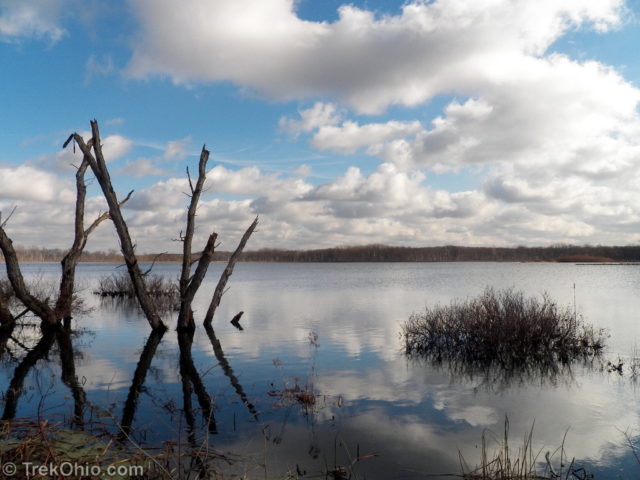
The Wildlife Area
A section of the wildlife area is designated as a wildlife refuge and is off-limits to visitors. The remainder is available for hunters (during hunting season) and fishermen. There are a couple of short trails and numerous scattered parking areas and pull-offs for wildlife observation, fishing, and hunting.
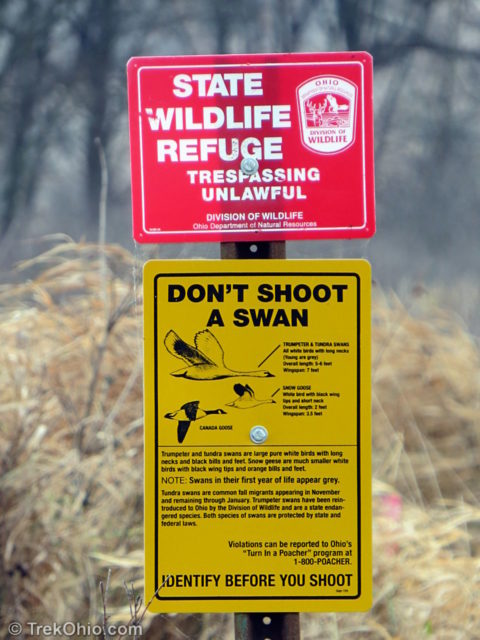
The Ohio Department of Natural Resources working with Ducks Unlimited has done a lot of work to create a premier wildlife area. Together they’ve created open fields and built dikes to increase the size of the wetlands. Nesting areas for prothonotary warblers and barn owls were built. River otters and trumpeter swans were released into the area, and they have both built-up sizable populations.
The area is popular with birders and features nests of sandhill cranes and bald eagles. During the fall and spring migrations it is popular with a variety of waterfowl including the ubiquitous Canada geese, as well as snow geese, herons, egrets, and a variety of duck species.
We visited Killbuck Marsh this past weekend. It was cold and sunny in the morning, growing cloudier as the day progressed, and finally ending in snow flurries. We visited three places; they are marked with yellow on the wildlife area map below.
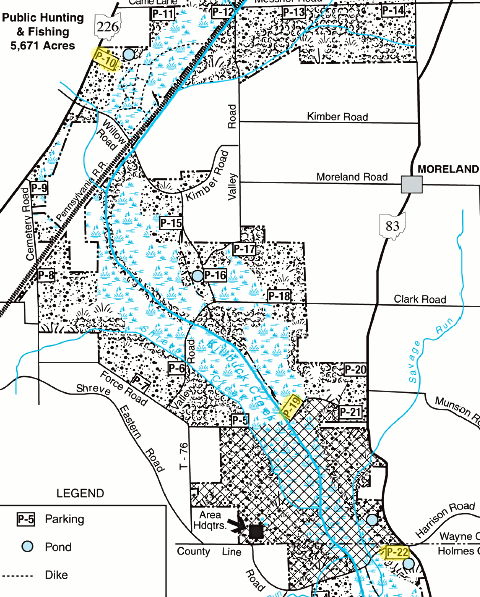
A Lamentation of Swans
Trumpeter Swans
A lamentation is one of many names used to refer to a group of swans when they’re not in flight. We saw many swans that were too far away for us to identify which species they were, but I’d like to begin by talking about the trumpeter swan, a species that has successfully become established at Killbuck Marsh. Although we were unable to take any photos of them there, here are a couple of photos of this species that we took last September at The Wilds.
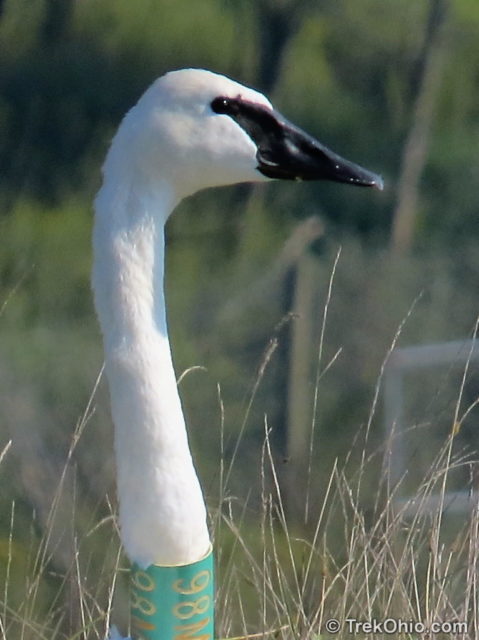
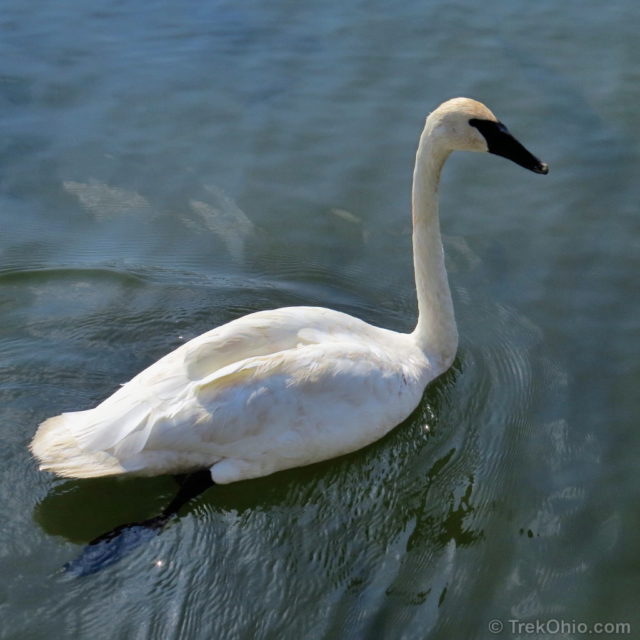
The trumpeter swan is the largest species of waterfowl on earth. It is also North America’s heaviest, native bird. The largest known specimen of trumpeter swan weighed in at 38 lbs (17.2 kg) and had a wing span of 10 feet (3.1 m).
Trumpeter swans get their name because they “trumpet”. In particular prior to flying off as a group, the members of this group bob their heads up and down and vocalize loudly before and during take-off.
Mute Swans
At our first stop at Killbuck Marsh (P-10 on the wildlife map) we were greeted by a trio of mute swans with a flock of Canada geese behinds them. Mute swans are not native to North America, so these must have descended from escaped swans. The species originates from Europe, Asia and North Africa.
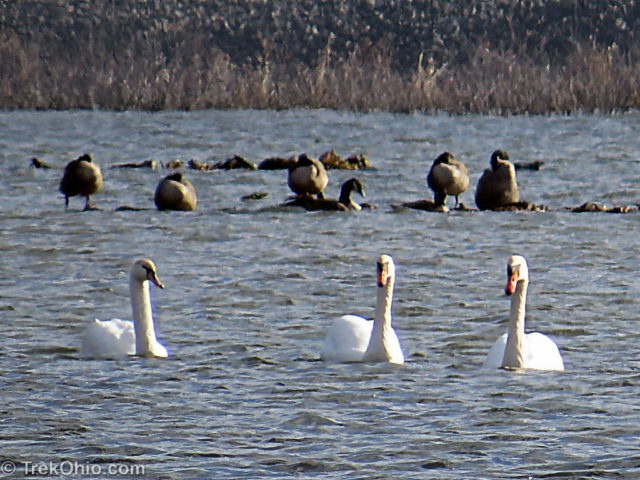
Mute swans aren’t really “mute,” but compared to other swans they are very quiet. They hiss and make strange, little sounds that don’t really carry far. Some people describe these sounds as “snorts.” There are links at the bottom of this article that will take you to other sites where you can listen to them. Visually they are easily recognized because they have orange bills with a black knob above the bill.
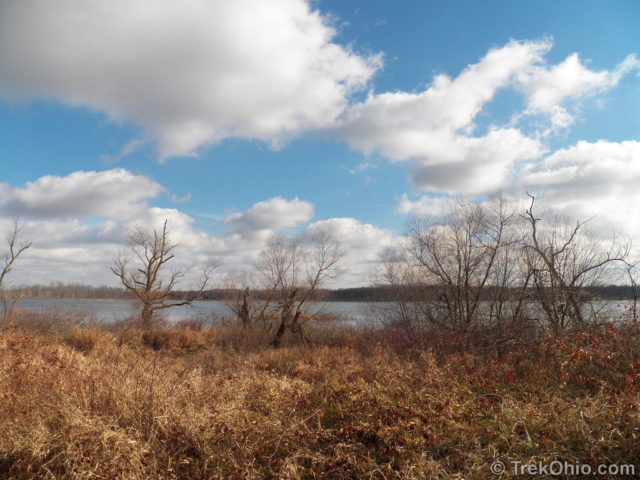
Later, we stopped at a parking spot by an entrance to the wildlife area on Force Road (at or near P-21 on wildlife area map). We then walked down Force Road to the edge of the marsh itself (near P-19). There are several areas where you can park your car off this gravel, one-lane road.
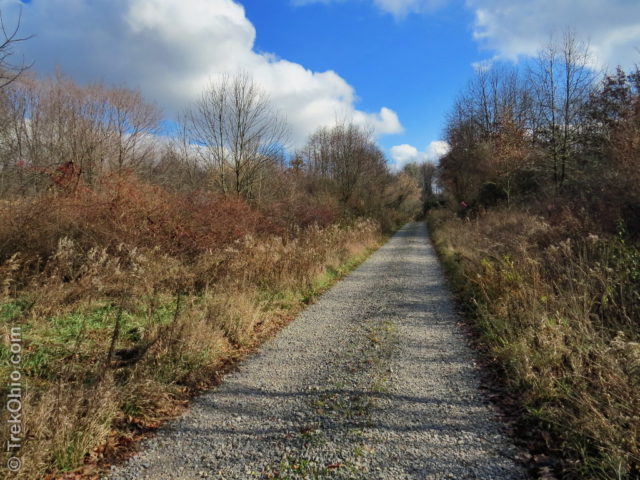
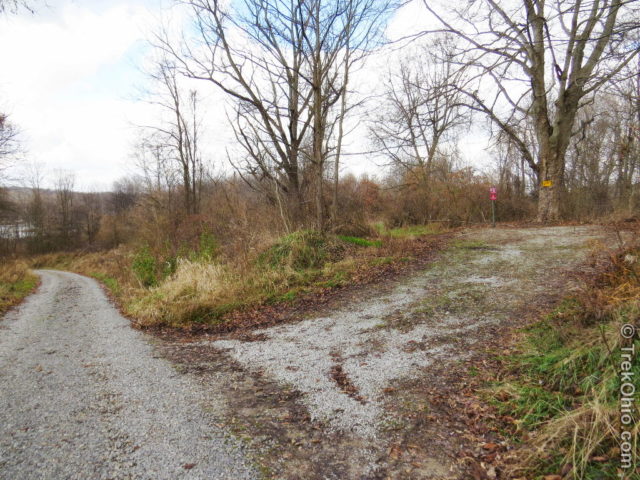
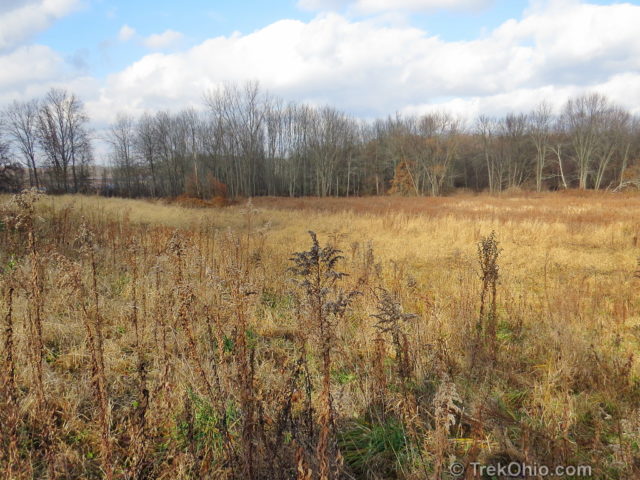
Below are a couple other photos taken while walking down Force Rd. to P-19.
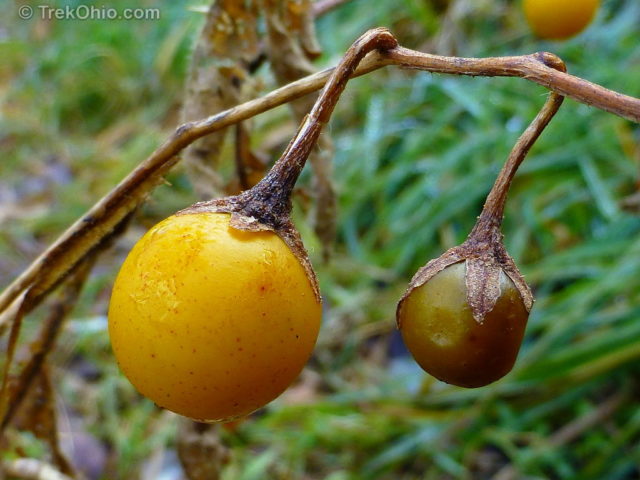
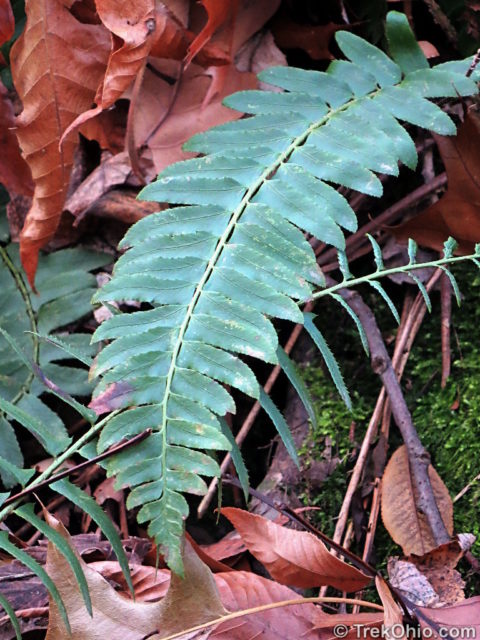
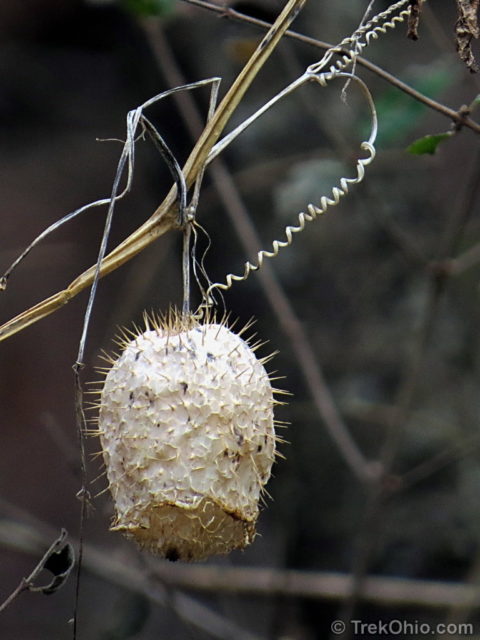
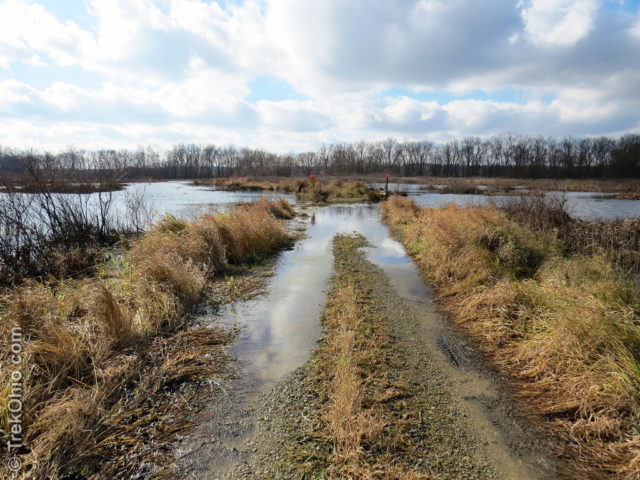
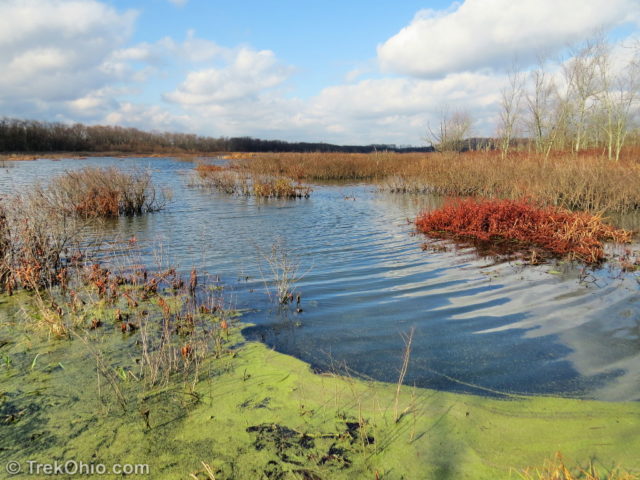
Finally we stopped at a pull-off near the bridge across Killbuck Creek on Centerville Road (west of P-22 on wildlife area map). In the distance, we saw two groups (lamentations) of swans. The group of three swans appears to be a family (two adult parents and one gray juvenile). The second, more distant grouping contained at least a dozen swans. I don’t recall ever seeing so many swans in one place in the wild. Although the distant swans were too far away to identify visually, when I came home and listened to the swan vocalizations (linked to at the bottom of this post), I believe they were all tundra swans.
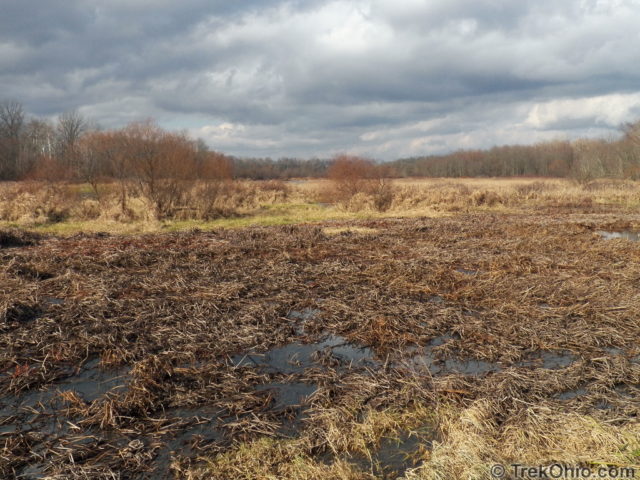
Tundra swans
Tundra swans breed on the extreme, northern fringe of the North American continent. Some of these individuals migrate south to Killbuck Marsh to enjoy our (relatively) balmy Ohio winters. Mature tundra swans have black bills with a yellow, teardrop-like marking near each eye. The links at the end of this post provide more information on how to distinguish tundra and trumpeter swans, but besides the teardrop-mark, the top of the head of the tundra swan is rounder and the bird is significantly smaller than the trumpeter swan. The juvenile tundra swan is gray with a pinkish bill. It’s feathers begin to whiten in late December and by late March it will be white like its parents.
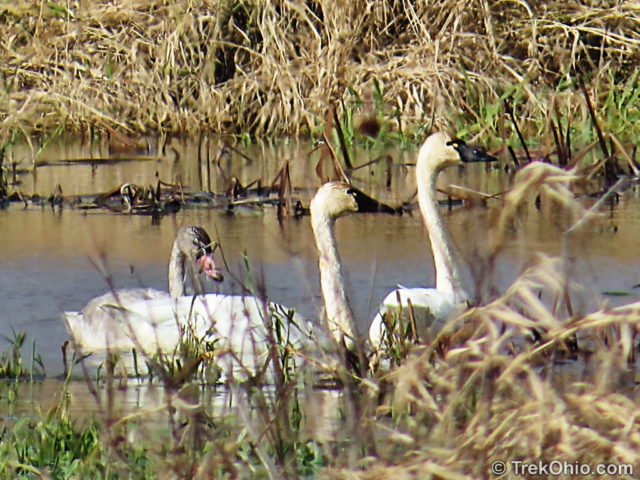
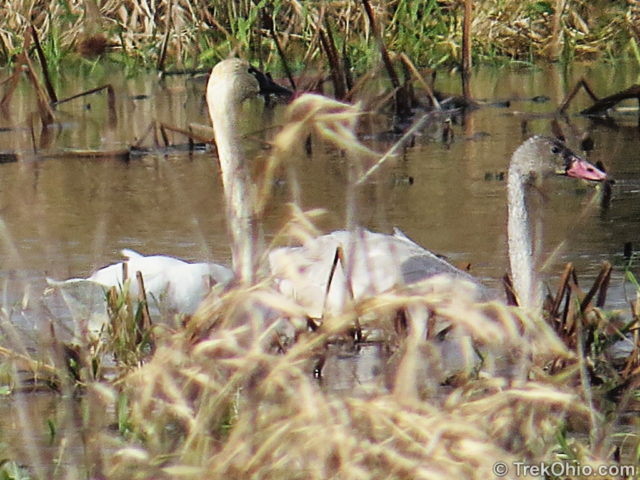
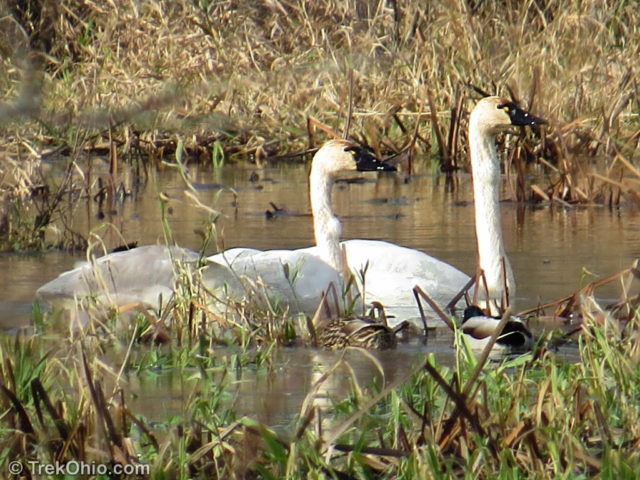
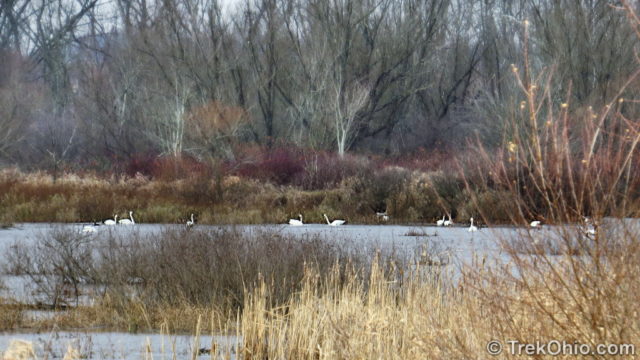
Additional information
- TrekOhio: Killbuck Marsh is located in both Holmes and Wayne counties. Check out either of these pages for links to the official site and for information on nearby parks and preserves.
- Brian Johnston: A Close-up View of the Wild Cucumber: This article has an incredible series of photos documenting the life cycle of this plant.
- Ohio Ornithologial Society: Birder’s Guide to Killbuck Marsh – contains detailed directions to interesting sites in the wildlife area
- eBird: Killbuck Marsh eBird Hot Spots
- Swans:
- The Trumpeter Swan Society: Swan and Goose Identification (PDF)
- Yellowstone National Park: Trumpeter Swan Facts
- ODNR: Trumpeter Swan
- ODNR: Mute Swan
- Cornell Lab of Ornithology: Mute Swan vocalizing
- Cornell Lab of Ornithology: Tundra Swan vocalizing
- Cornell Lab of Ornithology:Trumpeter swan vocalizing
Location
- Local Wildlife Management HQ
-
- Address: 1691 Centerville Rd., Shreve, Ohio 44676
- GPS Coordinates: 40.683339, -81.964324
- Google Maps: View on map or get directions
- Misc.: Be sure and bring a copy of the wildlife area map along with you – you’ll need it. Holmes and Wayne County have large Amish communities. Please drive carefully and be alert for slow-moving, horse-drawn buggies on roadways.
More on Wayne County

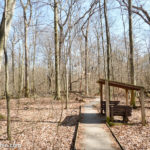
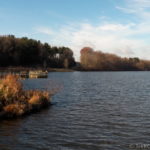
The tundra swans have arrived here on the Chesapeake Bay, I can hear them every morning off in the distant coves around us, love it and the Canada Geese honks. We are fortunate to have a pair of trumpeters visit during winter across the creek from us. I’ve yet to see them but they are documented each year by the Chesapeake Bay Environmental Center on who’s property the trumpeters reside for a while. I hope this year they come back and I’m lucky to photograph them. 🙂 Great post, I love the swans!
Lovely post. Especially I love Your swan photos. They are majestic birds.
Wonderful photos especially of the swans. Ahem, if a hunter couldn’t tell the difference between a swan and a snow goose, I wouldn’t give them a license, let alone a rifle.
Looks very much like swamp areas here in Finland.. Interesting way to name the swans. Here they area called as “Singing swan” (Trumpeting swan) and “Knob swan” (Mute swan). First one sings and the other one has a knob over the beak.